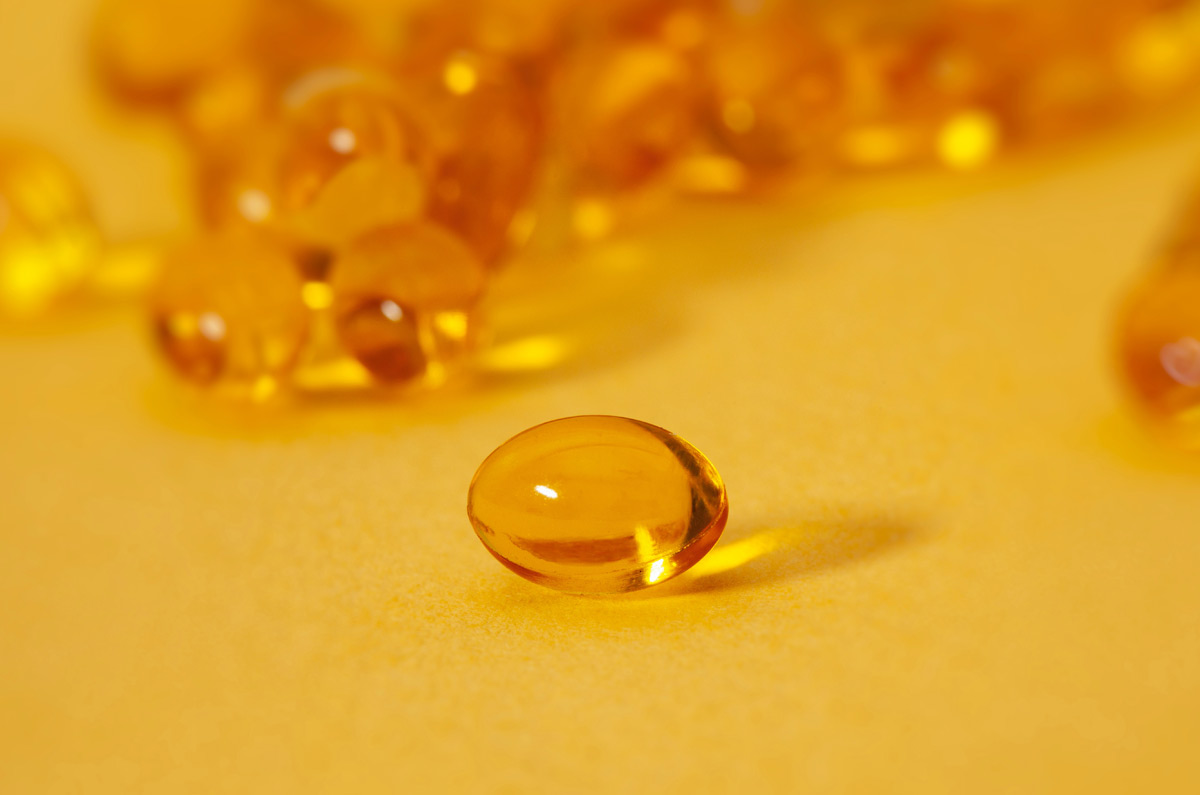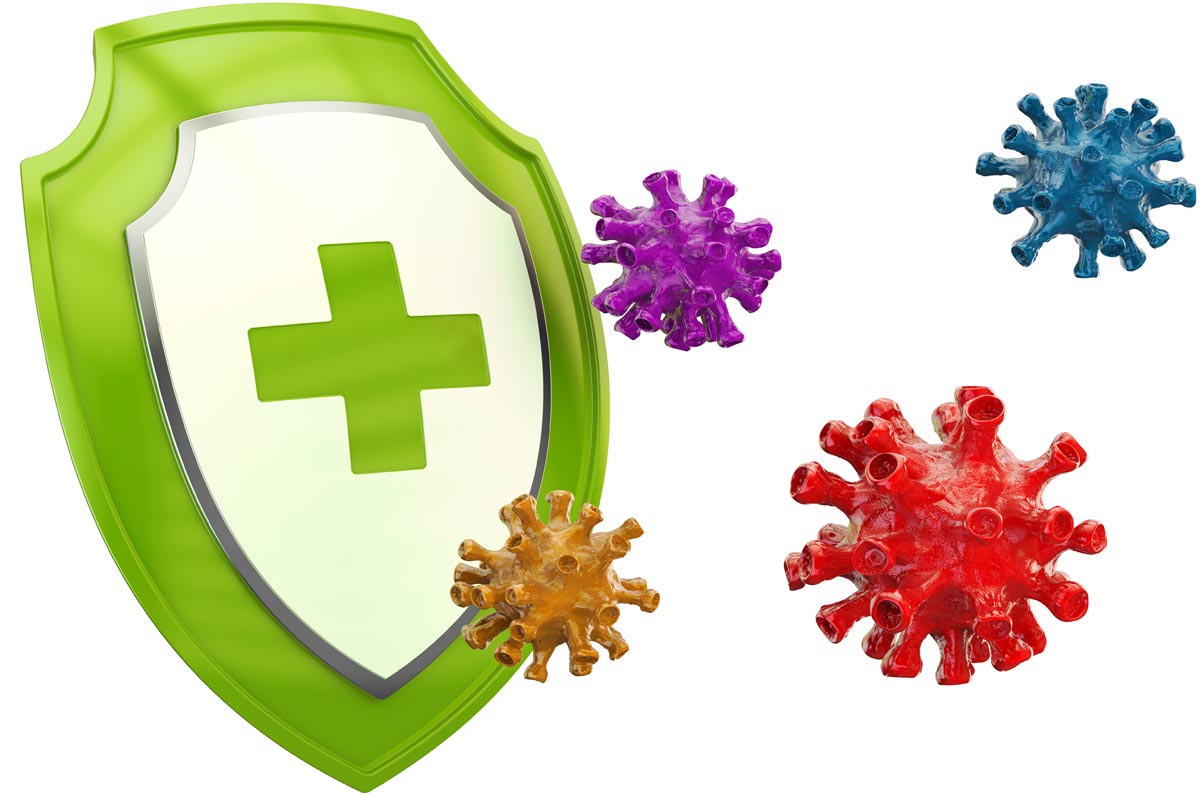You can’t pick up a magazine or scroll through socials without seeing a celebrity or influencer touting the latest probiotic, prebiotic, wonder food or tips to enhance your gut microbiome. When did the gut become big business? And what’s it all about?
Let’s take a deep dive into the gut microbiome (sorry – that sounds a little gross ?) and find out.
But first, some definitions:
- microbes are tiny living things that exist all around us – in the air, soil, water, our food, and our bodies. They’re so small you can’t see them with the naked eye. They include bacteria, fungi, viruses and archaea.
- microbiota refers to the entire community of microbes that inhabit a specific place. In this article we’re referring to the human microbiota – or the community of microbes that lives in and on your body, with a specific focus on the bacteria in the gut.
- microbiome is what we call the genetic material of all of the cells in the microbiota. So this is not just the microbes themselves, but all of the genes in all the microbes.
We’re all unique
We’ve known for many years that there are trillions of microbes living inside and on our bodies. But did you know there are almost as many microbial cells as human cells that call our bodies home?! (1)
The majority of these microbes are found along the digestive tract (or gut), especially in the large intestine.
Microbes are extremely important for our health. We exist with them in a mutually beneficial, symbiotic relationship. That means that we both gain benefit from living in such close proximity with each other.
We provide them with a cosy place to live and an abundant supply of food to feed on. They help us digest food, absorb nutrients and fight off harmful bacteria. They also have an effect on our metabolism, weight, mood, and most importantly, they help develop, modify and control our immune system.
We’ve evolved with these microbes over thousands of years, passing them on from generation to generation. However your microbiome is completely unique to you.
It started to develop when you were a newborn and was shaped by your mother’s health, how you were born (vaginally or via caesarean) and how you were fed as an infant (breastmilk, formula or combination). Then a multitude of other factors contributed to your microbiome, including where you live (e.g. rural/urban), your diet, the medications you use, if you’re a smoker, and your stress levels.
The link between our microbiome and disease
Even though we live in a symbiotic relationship with our gut microbiota, that doesn’t mean that all of the bacteria present in our gut are beneficial. It simply means that in a healthy person the gut microbiome is relatively stable, and the ‘good’ bacteria keep in check the numbers of ‘bad’ bacteria that could become harmful to us.
For a healthy gut microbiome, we need sufficient levels and a diverse range of good bacteria. Poor diet, smoking, chronic stress and antibiotics can all affect the quantity and types of bacteria we have in our gut.
Many studies have shown that it’s disturbances or imbalances with the gut microbiota that may contribute to the onset and/or severity of a long list of diseases. And that people who develop these conditions have too little or too much of certain types of bacteria, or lack some types of bacteria completely.
For many autoimmune conditions, the cause is unknown. A genetic predisposition, coupled with an unknown trigger is often the closest we have to a cause.
This has led some researchers investigating whether imbalances in the gut microbiome may be the a potential trigger that could result in some people developing:
- inflammatory bowel disease (9) (Crohn’s disease and ulcerative colitis)
- diabetes (8)
- musculoskeletal conditions such as rheumatoid arthritis (2, 3), ankylosing spondylitis (4), and psoriatic arthritis (5).
Scientists are researching whether improving the diversity and health of gut microbiota in people with these diseases will also decrease their symptoms.
Probiotics and prebiotics
Some of the treatments being researched include probiotics and prebiotics.
Probiotics are live bacteria and yeast that are similar to those living in our digestive tract. They’re found in cultured and fermented foods including yoghurt, miso, sauerkraut, kimchi and kombucha tea.
Probiotics help to maintain healthy levels of good bacteria in the gut and support our immune defences. They also help to break down foods we find difficult to digest, or foods that aren’t broken down by stomach acids.
One meta-analysis investigated whether probiotic supplements provided any benefits for people with rheumatoid arthritis (RA). Researchers concluded that there’s a potential role for probiotics in relieving inflammation for people with RA; however more research is needed before we can know if probiotics can relieve the disease progression (6).
Safety note – if you have a weakened immune system due to your condition and/or medications, you should talk with your doctor before taking a probiotic, as they contain live bacteria, and may not be safe for you to take.
Prebiotics are a form of dietary fibre that we can’t digest. But our good bacteria love them, and they’re a great food source to help them grow and multiply in your gut. They’re found in foods such as beans, asparagus, garlic, brown rice, bananas and sweet potatoes.
Scientists are investigating whether prebiotics can be used to treat or manage a range of health issues.
Looking after your gut microbiome
While there’s a lot of research being carried out investigating how our gut microbiome affects our health, we still have a long way to go before we have any definitive answers, especially when it comes to our musculoskeletal health. Our microbiomes are all so diverse and unique, which makes this research complex. And this research is also still quite new. So ‘watch this space’! We’ll bring you more information, especially as it relates to musculoskeletal conditions, as it emerges.
In the meantime, there are things you can do to look after, and even improve your gut microbiome. And the good news is that these things are also good for managing your musculoskeletal condition/s and health in general.
- Eat a well-balanced diet with a wide range of foods. The microbes in our gut are attracted to different nutrients. So providing a diverse range of healthy foods – fruit, vegetables, nuts, grains, seeds, fermented foods – means that you’ll be making a diverse group of microbes happy and healthy.
- Eat a wide variety of fibre. The CSIRO says we can “feed our gut bacteria or microbiome by eating foods rich in resistant starch; for example, lentils, peas and beans, cooked and cooled potato, cold pasta salad, firm bananas, and certain wholegrain products” (7).
- Avoid foods high in saturated fat and sugar as they have a negative impact on your microbiome.
- Exercise – you didn’t think I’d get through an article without promoting exercise did you ?? Apart from all the amazing things regular exercise can do to help us manage our musculoskeletal conditions, our weight, mood, and sleep…studies have shown that exercise can improve the quantity and quality of the microbes in our gut. To find out more, check out this article from The Conversation.
- Manage your stress. Studies have shown that stress – including psychological and emotional stress, lack of sleep, and stress caused by our environment such as noise, or extremes in temperature – can negatively affect the microbes in our gut. To manage stress, you can try to manage any environmental causes, get good, quality sleep, and use stress management techniques such as distraction, guided imagery, mindfulness meditation and deep breathing.
- Avoid antibiotics when they’re not needed, They should only be used to treat bacterial infections. Antibiotics can’t kill viruses, so they shouldn’t be used for illnesses like the common cold. But they do kill bacteria – including the good ones we need in our gut. So discuss the risks and benefits of using antibiotics with your doctor. Read this information from the National Prescribing Service about antibiotics.
- Get outdoors and interact with your environment. Whether it’s a walk in the park or digging in your garden, exposing yourself to external microbes is good for your microbiome.
- Stop smoking – it affects your overall health, including the microbes that call you home. Quitting is hard, but there are people and organisations who can help you.
- Talk with your doctor and/or dietitian about how you can improve your diet, for better gut health.
Contact our free national Help Line
If you have questions about managing your pain, your musculoskeletal condition, treatment options, mental health issues, COVID-19, telehealth, or accessing services be sure to call our nurses. They’re available weekdays between 9am-5pm on 1800 263 265; email (helpline@msk.org.au) or via Messenger.
More to explore
- 15 tips to boost your gut microbiome
Science Focus, 10 February 2020 - Articles on Gut series
The Conversation - Introduction to host microbiome symbiosis in health and disease
Mucosal Immunol 14, 547–554 (2021). https://doi.org/10.1038/s41385-020-00365-4 - Probiotics
National Institutes of Health – Office of Dietary Supplements (USA) - The microbiome: How gut bacteria regulate our health
New Scientist, 15 September 2020 - What are probiotic supplements – and are they necessary?
The Royal Australian College of General Practitioners (RACGP), 18 May 2018 - What is the human microbiome? (video)
The Conversation, 11 October 2016 - You are not just you—how your microbes affect who you are
Australian Academy of Science, 8 November 2017
References
- Sender R, et al. 2016. Revised estimates for the number of human and bacteria cells in the body. PLoS Biology.
- Wells, P. M., et al. 2020. Associations between gut microbiota and genetic risk for rheumatoid arthritis in the absence of disease: a cross-sectional study. The Lancet. Rheumatology.
- Taneja, V. 2014, Arthritis susceptibility and the gut microbiome. FEBS Letters.
- Fletcher, J. 2021.Expert perspectives: Ankylosing spondylitis and the gut microbiome. Medical News Today.
- Fletcher, J. 2020. Psoriatic arthritis and the microbiome: Is there a link? Medical News Today.
- Mohammed, A.T, et al. 2017. The therapeutic effect of probiotics on rheumatoid arthritis: a systematic review and meta-analysis of randomized control trials. Clinical Rheumatology.
- CSIRO, 2021, Resistant starch.
- Branca, M (2021). Plant-based diet may feed key gut microbes. The Harvard Gazette.
- Knights, D.et al (2014). Complex host genetics influence the microbiome in inflammatory bowel disease. Genome Med 6, 107 (2014).











